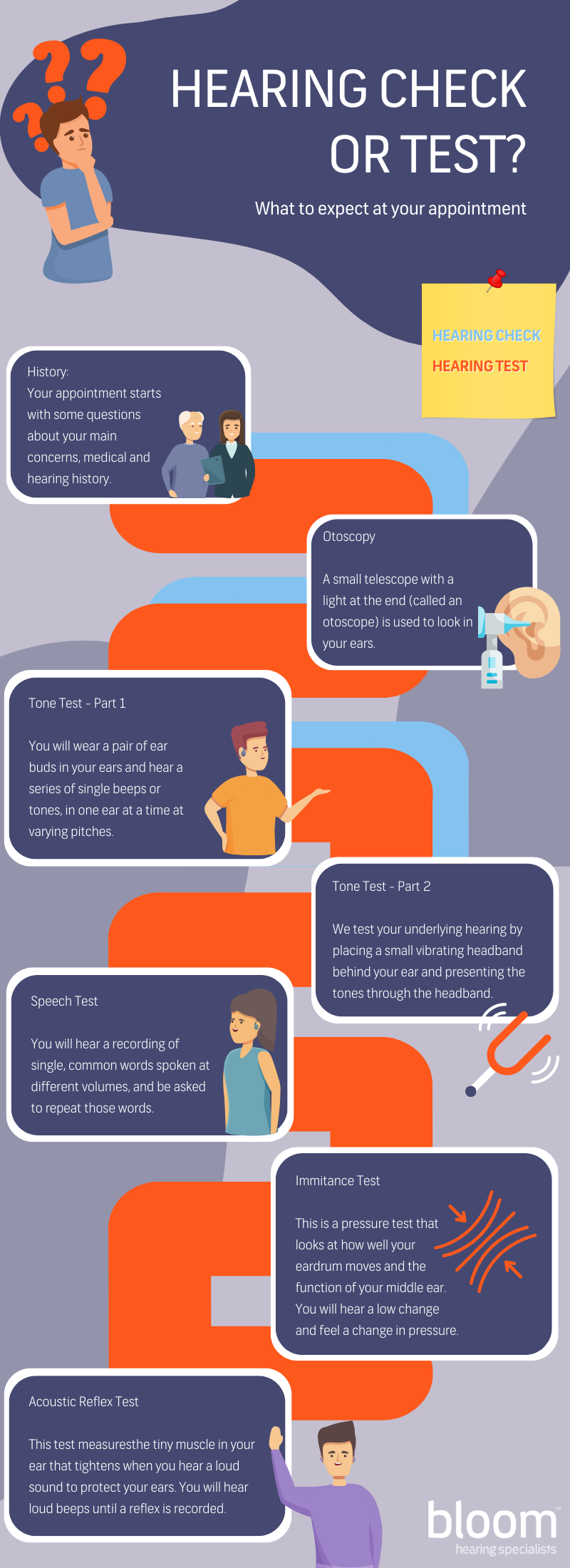Confused about terms like "hearing check," "hearing screening," and "hearing evaluation"? Learn the key differences and find out about the various tests involved with our informative infographic.
There are several names used in the industry so it can be confusing to tell what is meant by terms like “hearing check”, “hearing screening”, “hearing evaluation”, “hearing exam” or others.
Really, there are only 2 different types of hearing appointments to determine levels of hearing loss. To keep things simple, let’s call them Hearing Check & Full Hearing Assessment
The main difference is the extent of testing performed by your hearing expert. Don’t worry, none of them hurt!
Hearing History - Hearing Check & Full Hearing Assessment
Both start off with questions about your medical and hearing history. This helps to identify what factors may have contributed to your hearing loss or tinnitus and what the audiologist needs to consider when performing the tests.
Otoscopy - Hearing Check & Full Hearing Assessment
A small telescope with a light at the end (called an otoscope) is used to look in your ears. This step looks at the structure of your ear and ear drum, and is used to make sure your ears are healthy, and clear of wax and debris ready for testing.
Tone Test - Hearing Check & Full Hearing Assessment
During this test, you will hear a series of single beeps or tones, in one ear at a time, ranging from low pitch to high pitch tones. You will wear a pair of disposable earbuds in your ears and be asked to push the button when you hear a beep, even if it’s very quiet. This test finds the softest volume/level at which you can hear each tone. This is known as your hearing threshold.
Your Hearing Care Professional will also test your underlying hearing by placing a small vibrating headband behind your ear and presenting the tones through the headband. The vibration goes to the inner ear to test your underlying hearing and determines if your hearing loss is permanent and if you may need a medical referral.
Through the same earbuds used in the tone test, you will hear a recording of single, common words spoken at different volumes, and be asked to repeat those words. This test looks at the lowest volume at which you can hear and recognise speech. The results are compared to the tone test results to help identify hearing loss.
This is a pressure test that looks at how well your eardrum moves and the function of your middle ear. A soft rubber tip will be placed in your ear. You will hear a low change and feel a change in pressure, like you’re going up the hill in a car. The test lasts a few seconds and all you need to do is sit still and quiet.
To simplify, here’s a handy infographic that separates the different types of hearing tests you’re likely to experience when getting your hearing loss tested:

Article by Shatha, Audiologist, bloom™ hearing specialists Henderson